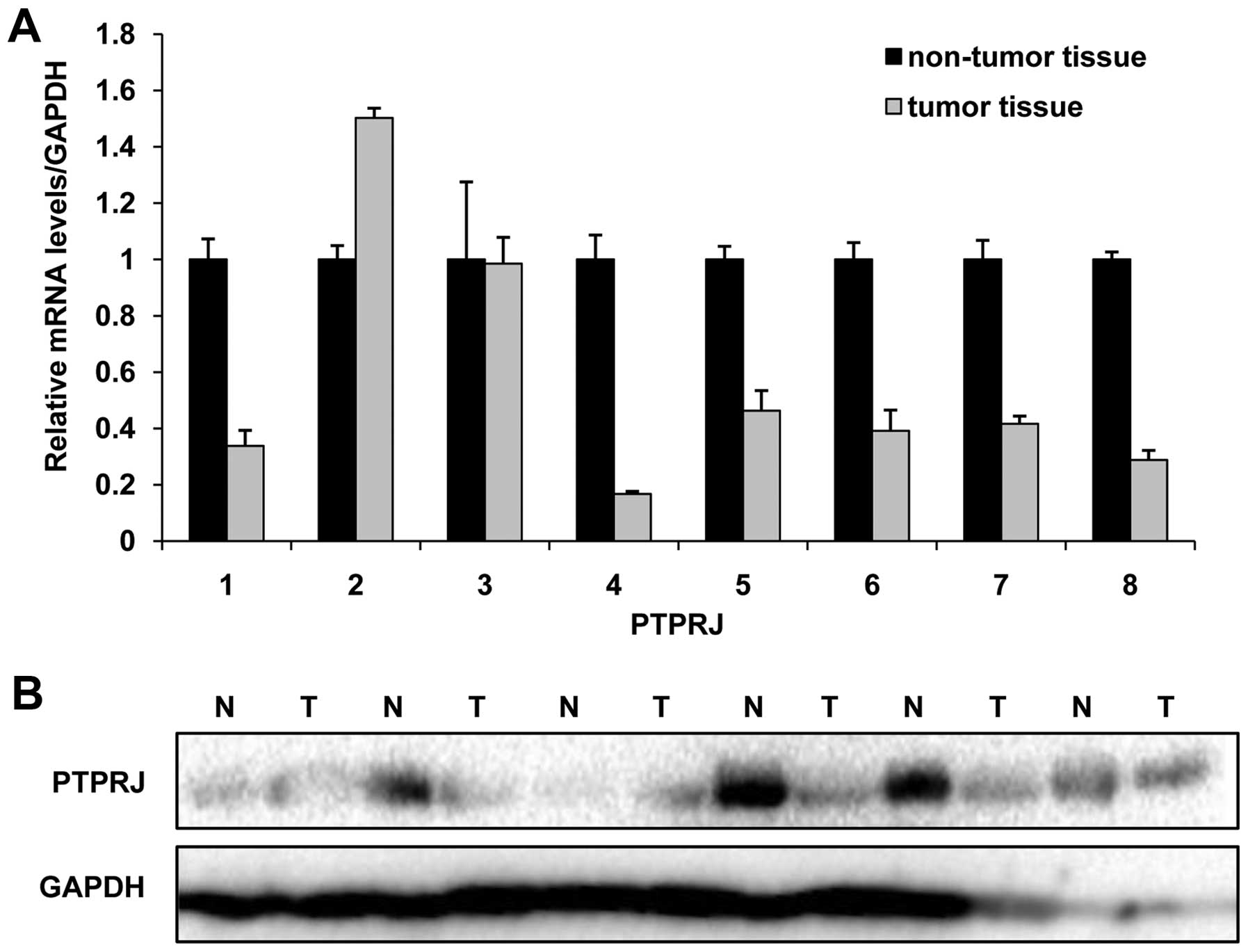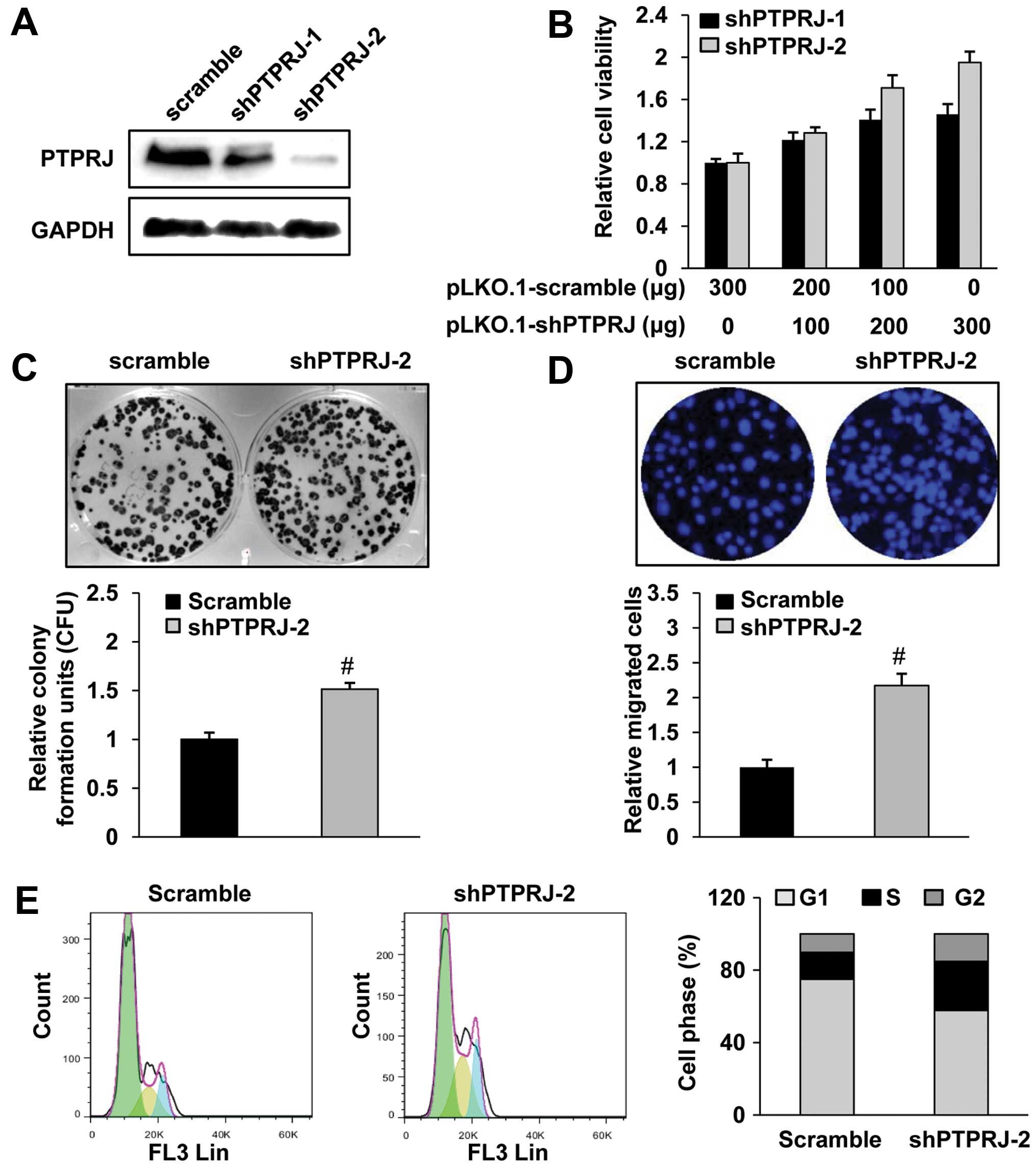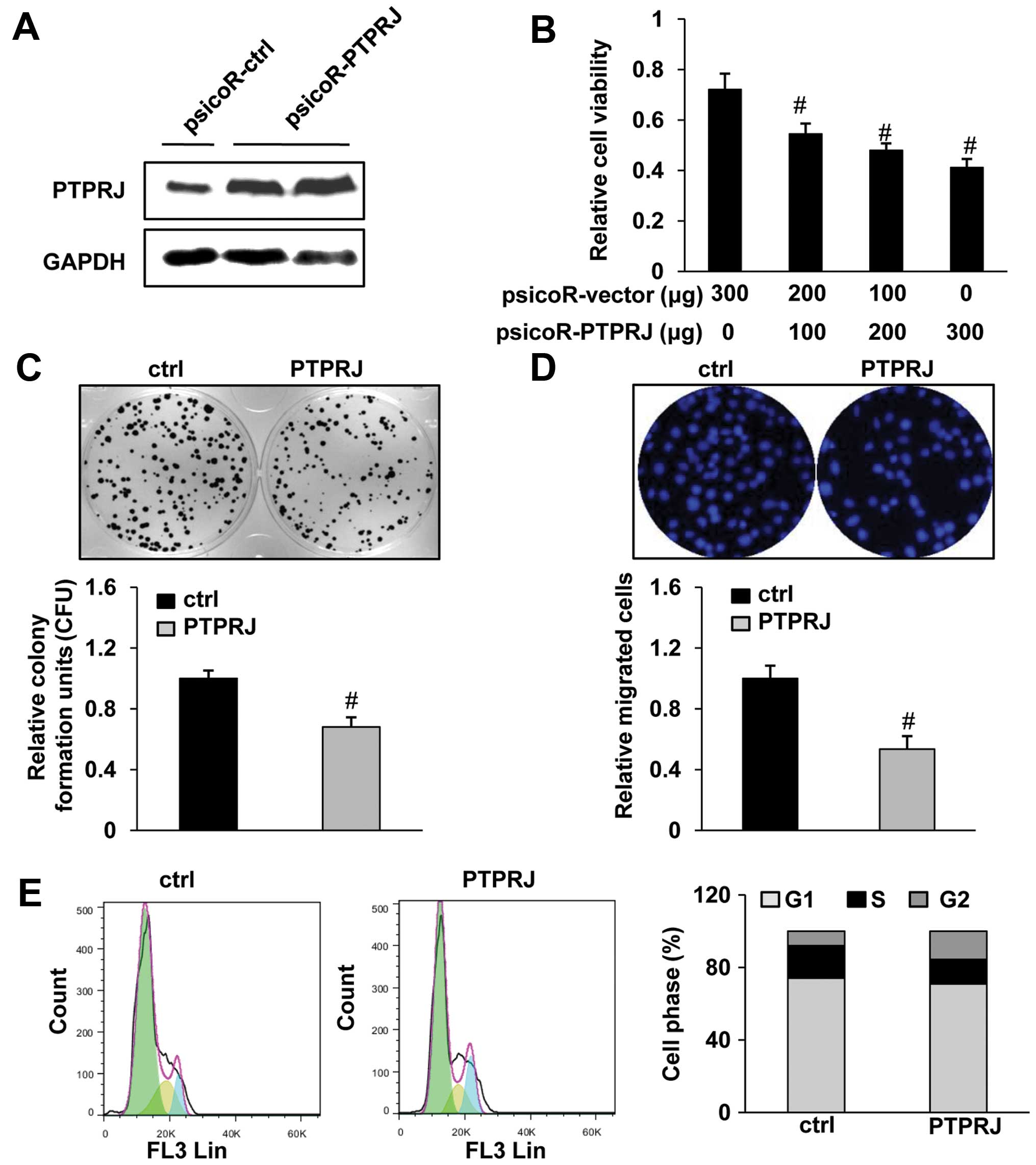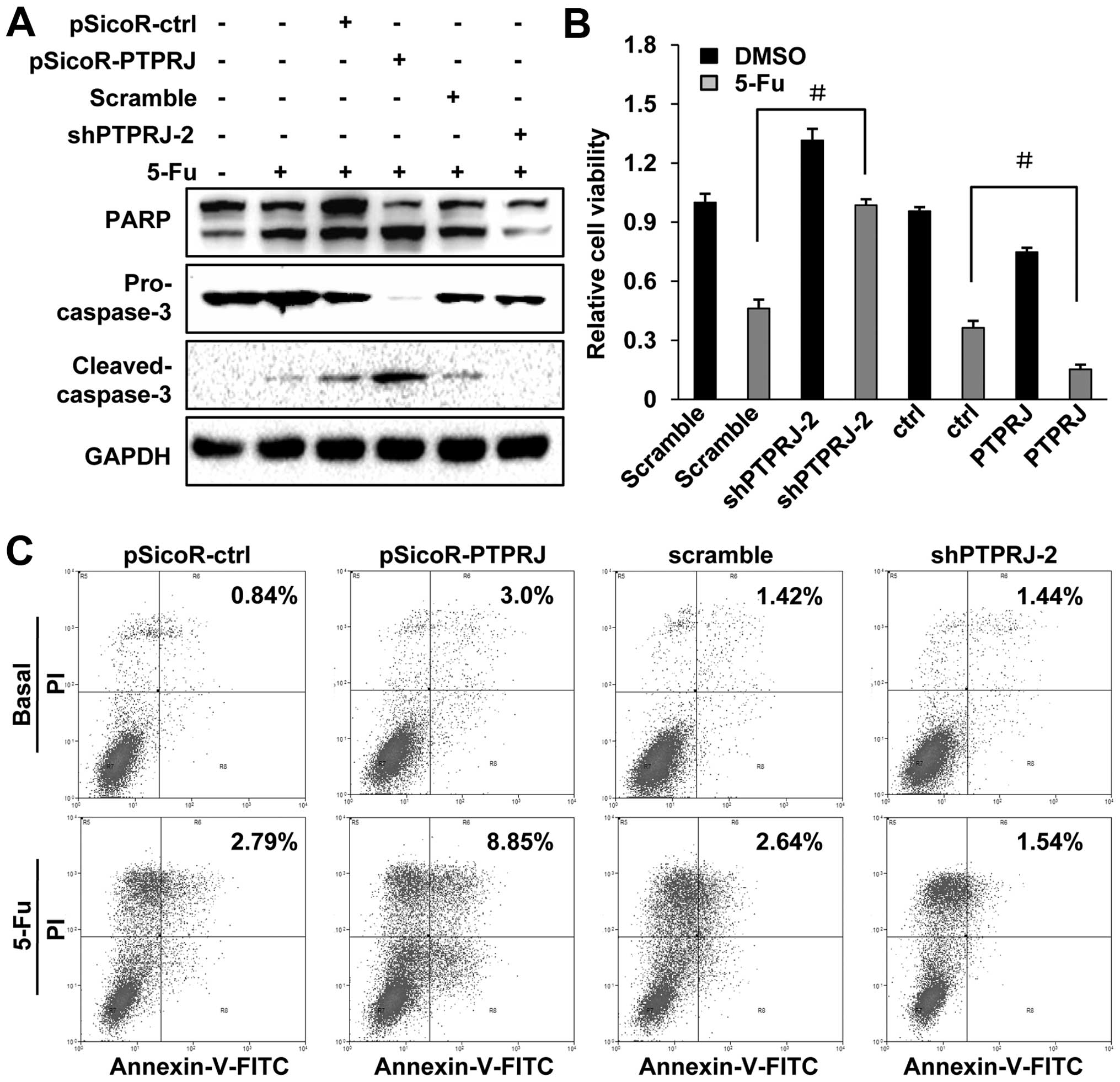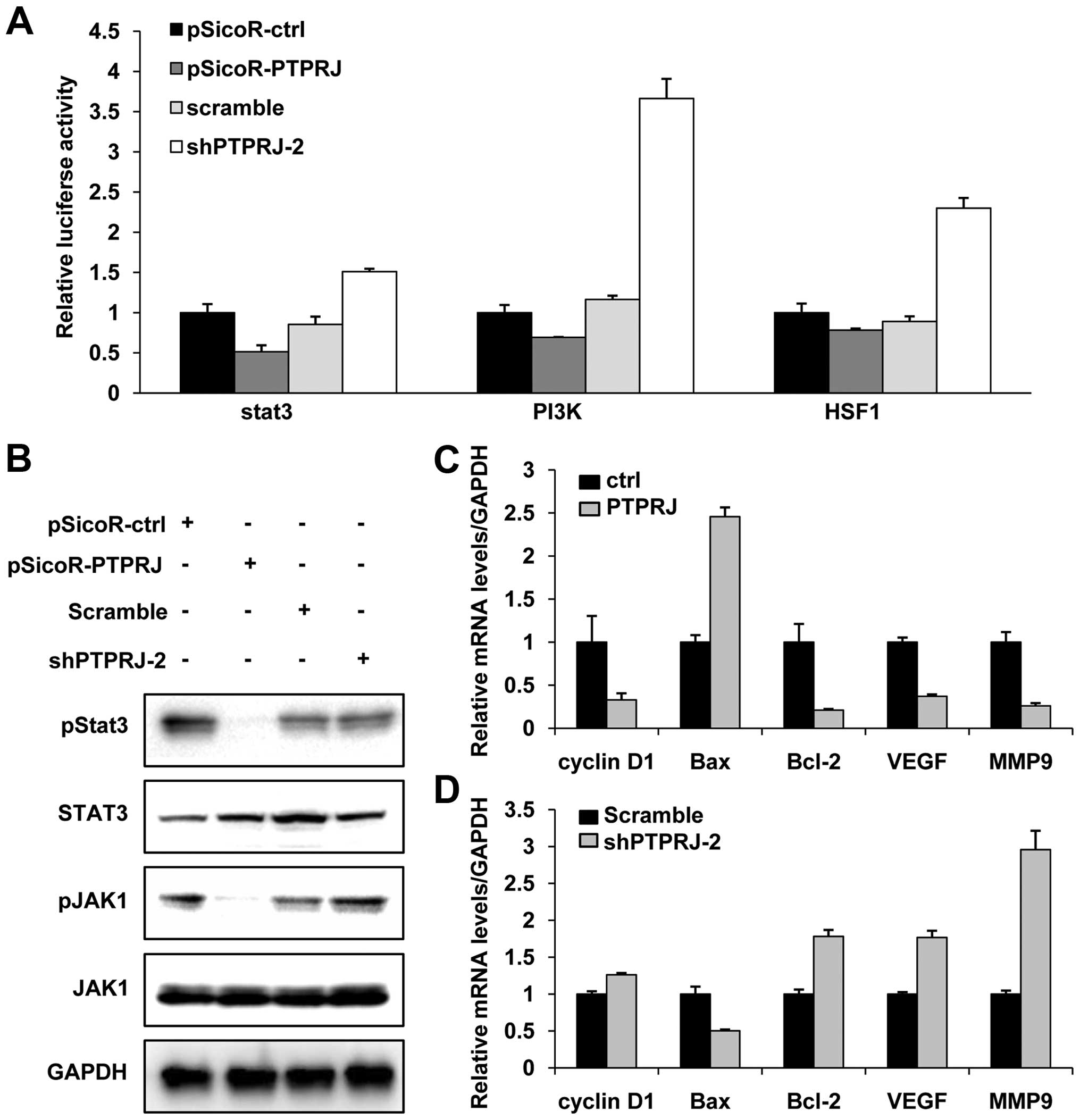|
1
|
Parkin DM and Bray F: Chapter 2: The
burden of HPV-related cancers. Vaccine. 24(Suppl 3): S3/11–25.
2006. View Article : Google Scholar
|
|
2
|
Ronco G, Dillner J, Elfström KM, et al:
Efficacy of HPV-based screening for prevention of invasive cervical
cancer: follow-up of four European randomised controlled trials.
Lancet. 383:524–532. 2013. View Article : Google Scholar : PubMed/NCBI
|
|
3
|
Pinion SB, Kennedy JH, Miller RW and
MacLean AB: Oncogene expression in cervical intraepithelial
neoplasia and invasive cancer of cervix. Lancet. 337:819–820. 1991.
View Article : Google Scholar : PubMed/NCBI
|
|
4
|
Jeon YH, Lee HW, Lee YL, et al: Combined
E7-dendritic cell-based immunotherapy and human sodium/iodide
symporter radioiodine gene therapy with monitoring of antitumor
effects by bioluminescent imaging in a mouse model of uterine
cervical cancer. Cancer Biother Radiopharm. 26:671–679. 2011.
View Article : Google Scholar : PubMed/NCBI
|
|
5
|
Koch M and Wiese M: Gene expression
signatures of angiocidin and darapladib treatment connect to
therapy options in cervical cancer. J Cancer Res Clin Oncol.
139:259–267. 2013. View Article : Google Scholar
|
|
6
|
Zheng Y, Chen H, Zeng X, et al: Surface
modification of TPGS-b-(PCL-ran-PGA) nanoparticles with
polyethyleneimine as a co-delivery system of TRAIL and endostatin
for cervical cancer gene therapy. Nanoscale Res Lett. 8:1612013.
View Article : Google Scholar : PubMed/NCBI
|
|
7
|
Keane MM, Lowrey GA, Ettenberg SA, Dayton
MA and Lipkowitz S: The protein tyrosine phosphatase DEP-1 is
induced during differentiation and inhibits growth of breast cancer
cells. Cancer Res. 56:4236–4243. 1996.PubMed/NCBI
|
|
8
|
Iuliano R, Trapasso F, Le Pera I, et al:
An adenovirus carrying the rat protein tyrosine phosphatase eta
suppresses the growth of human thyroid carcinoma cell lines in
vitro and in vivo. Cancer Res. 63:882–886. 2003.PubMed/NCBI
|
|
9
|
Massa A, Barbieri F, Aiello C, et al: The
expression of the phosphotyrosine phosphatase DEP-1/PTPeta dictates
the responsivity of glioma cells to somatostatin inhibition of cell
proliferation. J Biol Chem. 279:29004–29012. 2004. View Article : Google Scholar : PubMed/NCBI
|
|
10
|
Trapasso F, Iuliano R, Boccia A, et al:
Rat protein tyrosine phosphatase eta suppresses the neoplastic
phenotype of retrovirally transformed thyroid cells through the
stabilization of p27(Kip1). Mol Cell Biol. 20:9236–9246. 2000.
View Article : Google Scholar : PubMed/NCBI
|
|
11
|
Godfrey R, Arora D, Bauer R, et al: Cell
transformation by FLT3 ITD in acute myeloid leukemia involves
oxidative inactivation of the tumor suppressor protein-tyrosine
phosphatase DEP-1/ PTPRJ. Blood. 119:4499–4511. 2012. View Article : Google Scholar : PubMed/NCBI
|
|
12
|
Kovalenko M, Denner K, Sandstrom J, et al:
Site-selective dephosphorylation of the platelet-derived growth
factor beta-receptor by the receptor-like protein-tyrosine
phosphatase DEP-1. J Biol Chem. 275:16219–16226. 2000. View Article : Google Scholar : PubMed/NCBI
|
|
13
|
Lampugnani MG, Orsenigo F, Gagliani MC,
Tacchetti C and Dejana E: Vascular endothelial cadherin controls
VEGFR-2 internalization and signaling from intracellular
compartments. J Cell Biol. 174:593–604. 2006. View Article : Google Scholar : PubMed/NCBI
|
|
14
|
Palka HL, Park M and Tonks NK: Hepatocyte
growth factor receptor tyrosine kinase met is a substrate of the
receptor protein-tyrosine phosphatase DEP-1. J Biol Chem.
278:5728–5735. 2003. View Article : Google Scholar
|
|
15
|
Sacco F, Tinti M, Palma A, et al: Tumor
suppressor density-enhanced phosphatase-1 (DEP-1) inhibits the RAS
pathway by direct dephosphorylation of ERK1/2 kinases. J Biol Chem.
284:22048–22058. 2009. View Article : Google Scholar : PubMed/NCBI
|
|
16
|
Ortuso F, Paduano F, Carotenuto A, et al:
Discovery of PTPRJ agonist peptides that effectively inhibit in
vitro cancer cell proliferation and tube formation. ACS Chem Biol.
8:1497–1506. 2013. View Article : Google Scholar : PubMed/NCBI
|
|
17
|
Longley DB, Harkin DP and Johnston PG:
5-fluorouracil: mechanisms of action and clinical strategies. Nat
Rev Cancer. 3:330–338. 2003. View
Article : Google Scholar : PubMed/NCBI
|
|
18
|
Paduano F, Ortuso F, Campiglia P, et al:
Isolation and functional characterization of peptide agonists of
PTPRJ, a tyrosine phosphatase receptor endowed with tumor
suppressor activity. ACS Chem Biol. 7:1666–1676. 2012. View Article : Google Scholar : PubMed/NCBI
|
|
19
|
Omerovic J, Clague MJ and Prior IA:
Phosphatome profiling reveals PTPN2, PTPRJ and PTEN as potent
negative regulators of PKB/Akt activation in Ras-mutated cancer
cells. Biochem J. 426:65–72. 2010. View Article : Google Scholar
|
|
20
|
Aggarwal BB, Kunnumakkara AB, Harikumar
KB, et al: Signal transducer and activator of transcription-3,
inflammation, and cancer: how intimate is the relationship? Ann NY
Acad Sci. 1171:59–76. 2009. View Article : Google Scholar : PubMed/NCBI
|
|
21
|
Aggarwal BB, Sethi G, Ahn KS, et al:
Targeting signal-transducer-and-activator-of-transcription-3 for
prevention and therapy of cancer: modern target but ancient
solution. Ann NY Acad Sci. 1091:151–169. 2006. View Article : Google Scholar
|
|
22
|
Ihle JN: Cytokine receptor signalling.
Nature. 377:591–594. 1995. View
Article : Google Scholar : PubMed/NCBI
|
|
23
|
Sobti RC, Singh N, Hussain S, Suri V,
Bharti AC and Das BC: Overexpression of STAT3 in HPV-mediated
cervical cancer in a north Indian population. Mol Cell Biochem.
330:193–199. 2009. View Article : Google Scholar : PubMed/NCBI
|
|
24
|
Choi CH, Song SY, Kang H, et al:
Prognostic significance of p-STAT3 in patients with bulky cervical
carcinoma undergoing neoadjuvant chemotherapy. J Obstet Gynaecol
Res. 36:304–310. 2010. View Article : Google Scholar : PubMed/NCBI
|
|
25
|
Smart CE, Askarian Amiri ME, Wronski A, et
al: Expression and function of the protein tyrosine phosphatase
receptor J (PTPRJ) in normal mammary epithelial cells and breast
tumors. PLoS One. 7:e407422012. View Article : Google Scholar : PubMed/NCBI
|
|
26
|
Toland AE, Rozek LS, Presswala S, Rennert
G and Gruber SB: PTPRJ haplotypes and colorectal cancer risk.
Cancer Epidemiol Biomarkers Prev. 17:2782–2785. 2008. View Article : Google Scholar : PubMed/NCBI
|
|
27
|
Mita Y, Yasuda Y, Sakai A, et al: Missense
polymorphisms of PTPRJ and PTPN13 genes affect susceptibility to a
variety of human cancers. J Cancer Res Clin Oncol. 136:249–259.
2010. View Article : Google Scholar
|
|
28
|
Lv XG, Ji MY, Dong WG, et al: EBP50 gene
transfection promotes 5-fluorouracil-induced apoptosis in gastric
cancer cells through Bax- and Bcl-2-triggered mitochondrial
pathways. Mol Med Rep. 5:1220–1226. 2012.PubMed/NCBI
|
|
29
|
Taiyoh H, Kubota T, Fujiwara H, et al: NK4
gene expression enhances 5-fluorouracil-induced apoptosis of murine
colon cancer cells. Anticancer Res. 31:2217–2224. 2011.PubMed/NCBI
|
|
30
|
Tian F, Fan T, Jiang Y, Zhang X and Wang
X: A small interfering RNA targeting NF-kappaB p65 alone or
combined with 5-FU inhibits growth of esophageal squamous cell
carcinoma in nude mice. Pathol Res Pract. 208:32–38. 2012.
View Article : Google Scholar
|
|
31
|
Xie Q, Liang BL, Wu YH, et al: Synergistic
anticancer effect of rAd/P53 combined with 5-fluorouracil or
iodized oil in the early therapeutic response of human colon cancer
in vivo. Gene. 499:303–308. 2012. View Article : Google Scholar : PubMed/NCBI
|
|
32
|
McCubrey JA, Steelman LS, Abrams SL, et
al: Roles of the RAF/MEK/ERK and PI3K/PTEN/AKT pathways in
malignant transformation and drug resistance. Adv Enzyme Regul.
46:249–279. 2006. View Article : Google Scholar : PubMed/NCBI
|
|
33
|
Zhang LH, Yin AA, Cheng JX, et al: TRIM24
promotes glioma progression and enhances chemoresistance through
activation of the PI3K/Akt signaling pathway. Oncogene. Jan
27–2014.(Epub ahead of prin). View Article : Google Scholar
|
|
34
|
Kamran MZ, Patil P and Gude RP: Role of
STAT3 in cancer metastasis and translational advances. Biomed Res
Int. 2013:4218212013. View Article : Google Scholar : PubMed/NCBI
|
|
35
|
Gong J, Muñoz AR, Chan D, Ghosh R and
Kumar AP: STAT3 down regulates LC3 to inhibit autophagy and
pancreatic cancer cell growth. Oncotarget. 5:2529–2541.
2014.PubMed/NCBI
|



